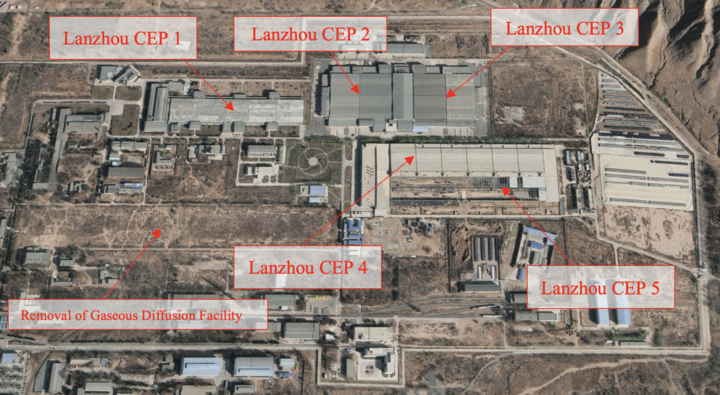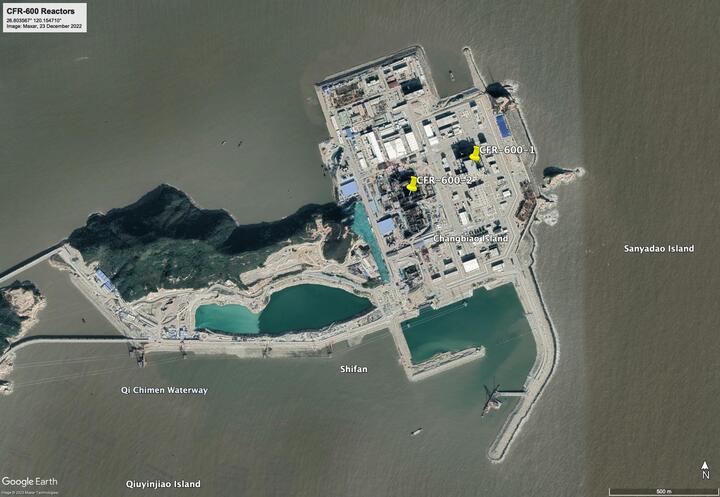Tatsujiro Suzuki
According to a Reuters report of 19 October 2023, Japan Nuclear Fuel Ltd (JNFL) still hopes to finish construction of Japan's long-delayed Rokkasho reprocessing plant in the first half of FY 2024 (i.e. during April-September 2024). Already more than 25 years behind schedule, there are reasons to believe that this new announcement is just another wishful plan that will end with another postponement.
One indication of further possible delays is that on September 28, 2023, Naohiro Masuda, president of JNFL, stated that the safety review of the reprocessing plant by Japan's Nuclear Regulation Authority will be difficult to complete by the end of the year 2023. He nevertheless insisted that the company could still meet completion target set as "by the end of the first half of FY 2024" (September 2024).
Here is a partial history of past key developments:
- 1993 - Construction started,
- 1997 - Initial target for completion,
- 2006-2008 Hot tests conducted, revealing technical problems with the vitrification process,
- 2011 - Fukushima Dai-ichi nuclear plant accident,
- 2012 - New safety regulation standards introduced,
- 2022 - Completion target date postponed to early in the first half of FY2024 (by June 2024) (26th postponement).
Why so many postponements?
There seem to be several underlying reasons for the postponements. First, JNFL lacks relevant expertise to manage such a technologically complex and hazardous project. It is owned by nine nuclear utilities plus all other major companies associated with nuclear power in Japan. Most of its senior executives are from shareholding companies (especially utility companies) and are not necessarily experts in the field of reprocessing.
Second, the technologies in the plant came from different companies and institutions. The management of the project is therefore technically complex.
Third, the post-Fukushima-accident nuclear facility safety licensing review process is much more stringent than before. For example, the Nuclear Regulation Authority told JNFL at their November 25, 2023 meeting:
JNFL should immediately make improvements because it is clear that JNFL does not understand the contents of the permit well enough to confirm the adequacy of the design of the facilities on site and has not visited the site.
Fourth, the financial costs to JNFL of postponement are covered by the utilities' customers because the utilities must pay a "reprocessing fee" every year, based on the spent fuel generated during that year, whether or not the reprocessing plant operates. The system by which the Nuclear Reprocessing Organization of Japan decides the reprocessing fee, is not transparent.
Fifth, the project lacks independent oversight. Even though JNFL's estimate of the cost of building and operating the Rokkasho plant has increased several-fold, no independent analysis has been done by a third party. One reason is that some of the shareholders are contractors themselves and have no incentive to scrutinize the reasons for the cost increases or the indefinite extension of the construction project.
After so many postponements, there is reason to wonder whether the plant will ever operate, but the government and utilities continue to insist that the plant will operate soon.
Even if Rokkasho were to operate, it may suffer from the same kinds of problems that marked Britain's light-water reactor spent fuel reprocessing experience, see the IPFM report Endless Trouble: Britain's Thermal Oxide Reprocessing Plant (THORP) by Martin Forwood, Gordon MacKerron and William Walker.
Why does Japan's commitment to reprocessing continue?
There are four reasons:
Spent fuel management. Currently, most of Japan's spent nuclear fuel is stored in nuclear power plant cooling pools. But the pool capacities are limited and the 3000-ton-capacity Rokkasho spent fuel pool is also almost full. The nuclear utilities must therefore start operating the Rokkasho plant unless they can create additional spent fuel storage capacity, either on- or off-site. The Mutsu spent fuel storage facility is a candidate, but due to the concern that spent fuel could stay there forever, Mutsu city refuses to accept spent fuel unless the Rokkasho reprocessing plant begins to operate. The Rokkasho plant design capacity is 800 tons of spent fuel per year.
Legal and institutional commitments. Under Japan's nuclear regulations, utilities must specify a "final disposal method" for spent fuel. The law on regulation of nuclear materials and nuclear reactors states that "when applying for reactor licensing, operators must specify the final disposal method of spent fuel" (Article 23.2.8). In addition, there was a clause that "disposal method" should be consistent with implementation of the government policy, which specified reprocessing as the disposal method. Although that clause was deleted in the 2012 revision of the law after the Fukushima accident, the Law on Final Disposal of High-Level Radioactive Waste still bans direct disposal of spent fuel. In addition, the 2016 Law on Reprocessing Fees legally requires utilities to submit reprocessing fees for all spent fuel generated every year since they stated in their applications that "final disposal method" for their spent fuel would be reprocessing.
Commitments to hosting communities. The nuclear utilities committed - albeit tacitly - to the communities hosting nuclear power plants that they would remove the spent fuel to reprocessing plants, since that was the national policy. Separately, JNFL signed an agreement with Rokkasho village and Aomori prefecture that says that if the Rokkasho reprocessing plant faces "severe difficulties," measures will be considered including the return of spent fuel stored at Rokkasho to the nuclear power plants.
Local governments hosting nuclear power plants were not involved in this deal, however. They could therefore just refuse to receive spent fuel from Aomori.
In fact, after the Fukushima accident, when the government was considering amending the nuclear fuel cycle policy to include a "direct disposal option" for spent fuel in a deep underground repository, the Rokkasho village parliament (at the behind the scenes suggestion by the then JNFL president, Yoshihiko Kawai), issued a strong statement asking for "maintenance of the current nuclear fuel cycle policy."
The statement continued that, if Japan's fuel cycle policy changed, Rokkasho would: i) refuse to accept further waste from the reprocessing of Japan's spent fuel in the UK and France, ii) require the removal of reprocessing waste and spent fuel stored in Rokkasho, iii) no longer accept spent fuel, and should receive compensation for the damages caused by the change of the policy. This is an example how "local opposition" is often raised by the utilities and the government as a barrier to changing the reprocessing policy.
Institutional and bureaucratic inertia. Bureaucrats, who, in Japan, rotate to new positions every two or three years, are reluctant to take the risk of changing existing policies. They therefore tend to stick with past commitments. Institutional inertia becomes stronger as a project becomes bigger. The Rokkasho reprocessing project is one of the largest projects ever in Japan. Changing the project is therefore very difficult.
Will Japan's "plutonium capping policy" have any real impact?
In 2018, Japan's Atomic Energy Commission announced a new policy on "Basic Principles on Utilization of Plutonium" (see also the IPFM post). In the new policy, JAEC proposed that: 1) Japan would reduce its stockpile of separated plutonium starting with a commitment not to increase it, 2) Reprocessing would take place only when a credible plan to use the separated plutonium existed.
This policy, in conjunction with the new Reprocessing Fee Law, gives the government legal authority to control the pace of reprocessing. However, it is not clear how the "capping policy" will be implemented. It is not a legally binding document, and no regulation has been introduced to control reprocessing. Utilities must submit specific plans for plutonium use to the JAEC for its review before reprocessing of their fuel begins. But the JAEC can only give advice to the government about the credibility of these plans. There is therefore reason for concern that this policy may not be sustained. (A similar "paper rule" has existed since August 2003).
A way out
A way out of this situation would be:
Find additional spent fuel storage capacity, either on- or off-site. Local communities may be more willing to accept on-site dry cask storage of spent fuel, if they are told that it is safer than spent fuel pool storage. For example, Saga Prefecture and Genkai-town, which host Kyushu Electric's Genkai Nuclear Power Plant have agreed to host a dry cask storage that is to start accepting spent fuel in FY 2027. Host communities may want guarantees that spent fuel will be removed after a specified storage period. Such a guarantee could be given by the central government.
Amend the law on final disposal of high-level radioactive waste to allow direct disposal of the spent fuel in a deep underground repository. This would provide more flexibility in spent fuel management and make it easier for local communities to host interim spent fuel storage.
Amend the Reprocessing Fee Law to allow Reprocessing Fund to be used by the government to implement shutdown of the Rokkasho reprocessing plant including payment for JNFL's financial debt and for dry cask interim storage. This would enable the government to end the Rokkasho reprocessing plant project.
Additional resources
Tadahiro Katsuta and Tatsujiro Suzuki, Japan's Spent Fuel and Plutonium Management Challenges, Report of the International Panel on Fissile Material, September 2006.
Masafumi Takubo and Frank von Hippel, Ending reprocessing in Japan: An alternative approach to managing Japan's spent nuclear fuel and separated plutonium, Report of the International Panel on Fissile Material, November 2013.
Plutonium Separation in Nuclear Power Programs. Status, Problems, and Prospects of Civilian Reprocessing Around the World, Report of the International Panel on Fissile Material, July 2015.
Frank N. von Hippel and Masafumi Takubo, Banning Plutonium Separation, Report of the International Panel on Fissile Material, July 2022.


